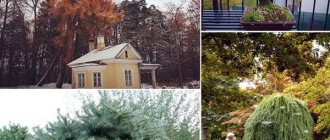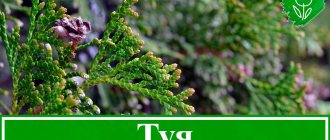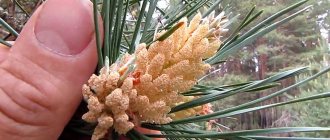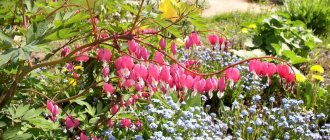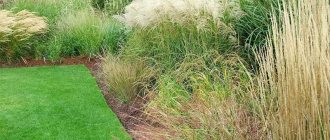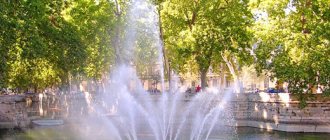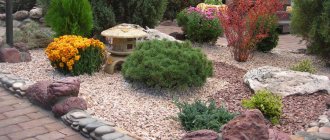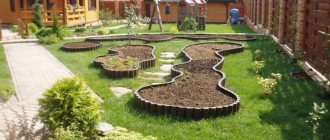Hearing this name for the first time, anyone imagines a plant with unusual and beautiful leaves. This picture is very far from reality.
The most difficult question is: is larch a coniferous or deciduous tree? This is due to the fact that it is the only representative of evergreens that is deciduous. In the fall it changes color, and in the winter it sheds its needles so that new ones grow in the spring.
History and habitat
The first mention of Larix (Latin name) can be found in literature in the 17th century. There is a theory that the Gauls and Celts called the resin that way. It began to be used as a species characteristic much later.
This tree species is most common on our planet. In Russia there are about 40% of such forests, most of them are in Siberia and the Far East.
Outside our homeland, these trees can be seen in the United States of America, Canada, and in some territories of Transcarpathia.
Description of the plant
Standard larch is characterized by its compact size: with a height of 2 - 2.5 m, the crown coverage is 1 m.
The slender, stately beauty surprises with the unusual shape of its branches, flowing cascades hanging down to the very ground.
The needles are soft and light green in the spring during the flowering period. It darkens during the summer, gradually turning golden in the fall.
The shoots are spiral, spreading in a dense carpet. Red cones (female type) and golden ones (male type) become a bright accent.
The root system is powerful and branched. The bark is finely scaly, red-brown in color. The height of the tree depends on the grafting site. In winter, the needles fall off, but the branches are decorated with numerous cones.
Distinctive features
The botanical description of the culture marks it as fast-growing. The growth rate reaches one meter per year. The average height is 45 m, girth is 1.2 m. The shoots are long and short, the needles are arranged in bunches or in a spiral. The lifespan is 3-4 centuries, however, cases have been recorded when individual specimens lived many times longer.
It is monoecious; both female cones and male spikelets are present on it at the same time; the pollination process begins to occur along with their appearance.
The roots grow rapidly and successfully attach to uneven surfaces. Wind conditions do not have a significant effect, but can shape the crown unevenly.
It is completely unpretentious, considering zoning. Having bought a seedling from your region, you don’t have to worry about shelter and feeding. The rest of the conifers burn under the sun, and without additional measures they receive quite serious damage.
The presence of a cushion of pine needles at the root area provides better protection and adds the necessary acidity to the soil. She definitely needs a lot of bright sunlight.
Varieties
Let us dwell in more detail on the description of the most popular varieties of Japanese larch in landscape design. They can differ in size, type of crown and shade of needles - from the variety of varieties presented, every gardener, without a doubt, will be able to choose the best option for his or her home garden.
Stiff Weeper is a larch whose shoots spread along the ground. Depending on the location of the grafting, this weeping form can grow up to 1.5–2 m with a diameter of 0.7–1 m. A beautiful crown with a small number of lateral shoots on hanging branches makes the use of this plant popular in spectacular landscape compositions. This variety looks harmonious on sun-drenched lawns.
The needles of "Stif Viper" have a deep greenish-blue color. With the arrival of autumn, the foliage changes its color to yellow and falls off. Female cones are usually reddish in color, while male ones have a rich yellow tint. This low-growing tree is demanding in terms of humidity levels - it cannot tolerate prolonged stagnation of water and drought.
“Pendula” is a tall weeping larch, the height reaches 7–10 m. “Pendula”, in comparison with all other varieties of Japanese larch, grows quite slowly, due to which the original appearance of the garden composition is preserved in the landscape for a long time. This variety is exceptionally decorative - tree branches can grow to the ground and spread along the surface of the ground, forming beautiful patterns. The needles are soft, greenish-blue in color. “Pendula” propagates by grafting; the plant is undemanding to the chemical composition and structure of the soil, but the greatest growth is observed on loose and well-drained soils.
“Diana” is a very spectacular variety, a characteristic feature of which is spirally twisted shoots. Larch is especially decorative due to its cones, which acquire a pinkish color at the flowering stage. Under favorable climatic conditions, larch of this variety grows up to 9–10 m with crown dimensions up to 5 m. The crown is hemispherical, the bark is brown-brown. In the spring-summer period, the needles are colored light green; with the arrival of autumn cold weather, the needles become yellow. Young crops grow quite quickly, but as they mature, annual growth slows down.
Larch “Diana” is popular in garden design as a spectacular tapeworm on the lawn; it is often used to create compositions with other conifers and lush flowering shrubs.
"Blue Dwarf" differs from other varieties of Japanese larch in its beautiful sky-blue needles, which change to yellowish in the fall. The variety is low-growing, the length does not exceed 0.6 m, and the diameter of the formed crown is the same. Blue Dwarf prefers light or lightly shaded areas and moist, fertile soils. In garden landscaping it is usually used to imitate garden alleys and create hedges.
"Woltaire Dingen" is a dwarf larch, which with its appearance can become a worthy decoration of any garden. Due to its compactness, the plant can be planted on alpine hills, near artificial reservoirs, as well as in spectacular heather compositions. This larch grows quite slowly, by the age of 10 it reaches only 70–80 cm in width and no more than 50 cm in height. The needles have a pleasant greenish-bluish tint, the needles are slightly twisted, 3.5 mm long. The shoots are shortened and grow radially.
Varietal diversity
What type of tree does it belong to? This is pine - the most extensive family of all existing ones. This, as well as the ease of crossing, explains the huge number of subspecies, as well as the varied appearance.
It is often not easy to immediately determine what kind of ephedra is in front of you. One thing can be confidently stated - questions about how to distinguish its neighbor according to classification from pine should not arise.
They are too different in outline, the branches of pine trees are always covered with needles, and the ones that grow are always hard and prickly, unlike its counterpart, which in winter only has cones on the branches, and the needles are fluffy and soft.
Three varieties are most widespread in the Northern Hemisphere.
- European grows in Central and Western Europe and is large in size.
- Siberian is easy to recognize by the bend of the side branches; they form an almost exact right angle with the trunk, only slightly bending at the very edge.
- Daurian is common in the Far Eastern regions, it has excellent frost resistance, and thrives on rocky soils.
Popular varieties
Larch needles fall off in winter. This is the only type of conifer that can withstand frosts with bare branches. But in the spring, amazing metamorphoses occur, when during the season the tree changes color three times, starting from soft green and ending with yellowish.
There are varieties with bluish needles. The main species are conventionally divided into Japanese, European, and Siberian.
The most popular were:
- Western;
- Bullets;
- American;
- Repens;
- Pendula.
All species are dwarf, grow slowly, and are characterized by a drooping crown. With proper care, they look luxurious, thanks to the lush mass of branches, which are shaped by pruning.
Tips for garden design
Immunity to many diseases and survival in low temperatures make it desirable for many gardeners and landscape designers.
Despite its unpretentiousness, for success in cultivation it will be useful to enrich the soil with sand if it is initially clay or loamy. She takes well to being around conifers. The main thing is to maintain the distance necessary for growth.
After planting and for 5-7 years, it is similar in shape to a cone, then it grows more spreading. Weeping varieties are especially popular. They look harmonious both individually and in combination.
Visually, compositions with flowers or standing alone on a uniform surface - a lawn or pebble area - will look better. The combination with the water surface of a pond or a small fountain will be a win-win.
In addition, a type has been selected from which it is possible to build a hedge, but one must understand that it will require a lot of work - constant pruning.
The use of this wood for industrial purposes is ensured by its unique ability to harden in a humid environment.
Cities built on water - Venice and St. Petersburg - used these logs as piles for all buildings. Often attempts to pull a nail out of a board ended with the metal breaking.
Because of this perception of moisture, it is used to decorate rooms with high humidity - baths, bathrooms, verandas, balconies. Note that lumber is treated with a special solution, which significantly extends their already long service life.
The property of becoming harder could not go unnoticed in the construction of bridges, piers, shipbuilding, and the manufacture of containers for liquids.
An elegant landscape decoration - larch: planting and caring for the plant
To create unique beauty in your summer cottage, designers advise using coniferous trees. They have a special attractive power and charm throughout the season. Despite the fact that the Siberian beauty loses its needles in the winter, it is truly a majestic tree.
Since the tree actively absorbs harmful gases, it is advisable to grow it next to a gazebo for relaxation. It will provide the area with clean air.
Let's look at the secrets of caring for and planting larch in the Moscow region, since it is especially popular here. They consist of the following main aspects:
- landing time;
- nature of the soil;
- lighting;
- humidity;
- pruning
By consistently fulfilling these simple requirements, an amazing coniferous plant with soft needles will appear near the house. Unfortunately, some people believe that the tree brings little benefit. Therefore, a controversial question arises: is it worth growing larch in the country? There are different opinions for and against, but it is better to make a decision individually, after getting to know the culture closely.
Choosing a landing time
First of all, you need to choose the ideal time for planting. The optimal option for performing the procedure is spring before the needles appear or mid-autumn, when the first needles begin to fall off. During this period, the soil contains a small number of microorganisms that can disrupt the larch root system. Its main feature is mycorrhiza, which consists of a natural symbiosis of roots with fungi. As a result, the tree successfully absorbs minerals and other useful substances from the soil. The plant is planted together with a clod of earth, regardless of its age.
When planting larch in a new area, you should add a little soil from under old pines, fir or spruce to the soil.
Suitable substrate
The unpretentious northern beauty grows wonderfully on various types of soil:
- acidic;
- neutral;
- alkaline.
An example of this is the natural environment in which larch is found: mountain slopes and marshy areas. Despite this, it is important to understand that bred varieties are more vulnerable to growing conditions than natural ones. Planting larch in autumn or spring is carried out in the usual way. To do this, dig a wide hole, which is 2 times larger than the rhizome of the crop. Then the soil is mixed with peat and humus. Clay soil is diluted with coarse river sand. The bottom of the pit is covered with the prepared substrate, the seedling is laid and covered with the remaining soil. The top ball is thoroughly compacted and watered with clean water.
Sufficient light
In order to enjoy watching the larch grow, it is important to choose a suitable site for it. Most varieties prefer plenty of sunlight. If you plant a tree in partial shade, it begins to hurt and its growth slows down. In some cases, the larch dies altogether. With a lack of lighting, the number of shoots decreases. Therefore, the tree cannot form a pyramidal crown, and in summer it looks almost naked and unattractive.
Species of larches that have been bred artificially require more careful care.
A wise approach to soil moisture
Young larch seedlings actively develop in moist soil. Therefore, during dry periods it needs regular watering. Adult plants do without additional moisture, as they wonderfully tolerate extreme climatic conditions. Standard varieties require special care because they do not like excess or lack of moisture.
Timely pruning of a coniferous beauty
To form a stylish and compact crown, larch is regularly pruned in early spring until buds appear. Young branches of the plant are shortened by about 2 buds. Some types of larch are used as hedges. They need regular formative pruning. Drooping branches of the Pendula larch are thinned out once every 3 or 4 years, removing half their length. As a result, the plant receives an abundance of air and sunlight.
Use in everyday life
Any items made from this forest beauty disinfect the air in the apartment. All components are used both in folk and official medicine. Its oil is included in many ointments.
Turpentine baths have now gained some popularity, as they speed up metabolism and relieve pain in joint diseases. Turpentine is made from resin and other parts with high resin content.
One of the features is the record content of vitamin C in green fragments. Tincture from it serves as a means to increase the body’s immune functions, reduce bleeding gums, help with migraines of various etiologies, and have a sedative effect on the nervous system.
Tar is often used as chewing gum; it is famous for its antibacterial effect and also improves digestion. Larch sponge is a growth on the bark.
For treatment, only a young mushroom is used, which is noted for its excellent hemostatic, diuretic and antifungal qualities.
It is not recommended to treat children, adolescents, the elderly, as well as pregnant and lactating women with chaga.
I would like to hope that after reading this article you will not only answer the question of what larch is - is it a coniferous or deciduous tree, but also learn to distinguish it from others, learn about the intricacies of breeding and the possibilities of benefiting in different areas.
Fertilizing
Immediately after planting, the larches are fertilized with Kemira Universal, which contains a complex of micro- and macroelements. Consumption rate - 20 g per 1 m2. At the beginning of summer, trees are fed with a solution of urea (10 g per 10 liters of water): it will improve the appearance of the needles. You can also use universal fertilizers for conifers, which are sold in agricultural stores.
Purpose, timing and schemes for pruning larch
There are 3 types of pruning of ornamental plants:
- Forming. It is necessary for young plants to give them the desired appearance. To do this, remove all “extra” branches that stand out from the desired silhouette. Trimming the growing points will make the larch bushier. The optimal time for is spring.
- Rejuvenating. It is carried out in spring or early autumn. All weakened branches are removed from the tree. Old branches can be cut off by 1/3 so that young shoots appear on them.
- Sanitary. It will be needed if the larch is affected by pests and diseases. You should also trim off any shriveled shoots on which needles no longer appear. Carry out as needed.
Larch is difficult to shape, so making shapes out of it is unlikely.
The decorative tree does not require special care
Photo of larch
Reproduction
European larch is propagated by grafting and seeds. Cuttings take root better than pine, but not by much. Those who like to propagate the crop vegetatively on their own will not be able to, and even in nurseries the operation does not always end in success. The percentage of rooted cuttings is extremely low, even among specialists.
Vaccination is also not an operation for amateurs. But you can try to germinate the seeds after stratification, however, even here you should not particularly expect to bring the seedling to planting in open ground.
Harvesting
Oooh, this is a whole art - extracting seeds from cones! They usually hang low, so you don’t have to use a stepladder. They need to be collected in November - if earlier, they may still be immature.
What if there are both new cones hanging on the tree and those left over from last season? How to distinguish them? New buds are lighter in color, and if you peel back the “scales” slightly, the seeds will be visible. As a rule, they have already flown out of the old ones. If you have Siberian or Japanese larch, collect the cones and place them in a linen bag on the radiator. The scales will bend back and you can get the seeds without any problems.
